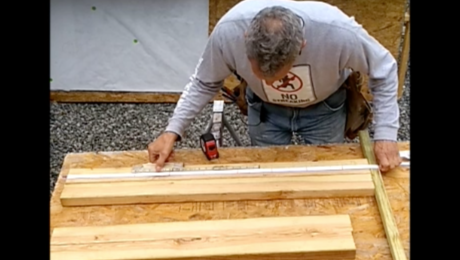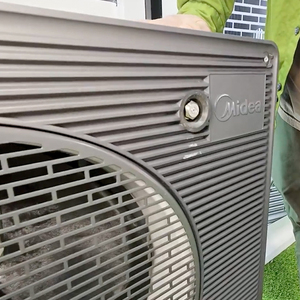Fiber reinforced concrete for slab
Someone told me that you could eliminate R-Bar in a slab IF you use a fiber reinforcement in the concrete mix. Any thoughts on the pros and cons. and the cost difference of fiber vs R-bar. What about the strength comparison
I watched them pour slab in our area, using R-bar. The R-bar is not suspended on chairs, so when the pour they lift the R-bar to allow some of the concrete to flow under the R-bar. Then they wak on it. It seems to me, that R-bar has added very little strength to the concrete pour. Your thoughts
As usual my thanks in advance for all everyones help.
Cloudbuster



















Replies
89041.1
Someone told me that you could eliminate R-Bar in a slab IF you use a fiber reinforcement in the concrete mix
NO!!!!!!!
cloudbuster,
They are and were wrong!
Two different issues addressed by two different solutions.
Fiber does not and cannot be used to address the issues rebar handles
and rebar does not and cannot handle the issues fiber mesh deals with.
Mesh helps prevent shrinkage cracking, rebar addresses ultimate strength and cohesion of the slab.
While I have the greatest of respect for concrete pros ... they truly are a skilled trade ... there are a lot of posers out there.
For example, a neighbor recently had a driveway poured, by "a friend who's done this for years' ... without any rebar or mesh - just concrete.
Now, this drive is sheltered from the sun, essentially level, and our ground is little more than dry rock ... so, so far, the drive has held up. Sometimes you can survive a jump where your parachute fails too; that doesn't make it wise! My point is that not everything you see done is correct.
It's your slab. Feel free to take any chances you want. A properly made slab is very likely to be WAY over-engineered for the use. Just consider the pain and expense if you have to remove it, and do it over. A little steel, and those chairs, seems pretty cheap by comparison.
Just as important is the preparation of the base. Even the best slab will fail if the base is soft, or fails to drain.
A properly made slab is very likely to be WAY over-engineered for the use.
Isn't that a contradiction? Wouldn't a properly made slab be simply engineered for it's use and not over engineered, that's just a waste of money.
I think I know what you meant to imply, and mean no disrespect. Yea someday a overloaded concrete truck will turn around in the driveway, that is simply planning (engineering) for the inevitable.
the typical house does not weigh enough to need rebar. the typical driveway does not see load factor for rebar. But a house need rebar because its a code item. Now the question was, "can fiber replace rebar?" no.
I say that a properly made slab is way over-engineered, simply because even a minimal slab, say 4" thick, with a 6x6 wire grid, is capable of supporting loads far in excess of what it will likely ever see .... and it's just not practical to make the slab any thinner. Now, the question becomes "what makes concrete different from any other masonry product?" The answer, quite simply, is the steel. Many masonry items have far greater compressive strength than concrete. Ever ordinary mortar has an amazing compressive strength. Where masonry fails is in tensile strength; it simply doesn't "stretch" very well. Steel, on the other hand, is very strong in that way. This is why I-beams are so strong. Concrete combines the two. It is one of those rare hybrids that manage to preserve the advantages of each of it's components. It is strong both in compression (something sitting on it) as well as in tension (flexing as the load moves about). Removing the steel from concrete has about the same results as removing your shoelaces .... it works just fine, as long as you don't go anywhere :D
Removing the steel from concrete has about the same results as removing your shoelaces .... it works just fine, as long as you don't go anywhere :D
and thats the point, rebar does nothing till a load factor is applied
I agree with the others, FIBER MESH does not equal REBAR. Fiber mesh does add some shrinkage resistance to the slab but, but is by no means equivalent to rebar. If you want to prove this fact to your self, break a fiber and then imagine how much force it would take to break an equivalent size of rebar. The slab performance is largely linked to your subgrade preparation and soil conditions. The fundamental need for rebar is to minimize crack widths when it cracks and it will crack in almost all cases unless it is post tensioned. In our area we have a plastic clay that is one of the worst for ruining slabs. An unrestrained sample of our soil will swell by 3" when its moisture content changes from its natural content to fully saturated. It does not matter how much weight that it is sitting on top of it, it will push the slab up.
To your question about rebar placement. You are totally correct. If it is on the bottom, you might as well not have purchased it or spent the time to install. A qualified finisher will appreciate this fact and pay close attention to this, and one that is not, will only care about the ease of rolling his wheel barrow. If you are nervous, hire a pump truck and chair all the rebar. I had a pumper truck for my foundation pour it was only $500, money well spent.
A qualified finisher , Isnt that an oxymoron.
Rebar is not the same as steel mesh. Fiber reinforced concrete can replace steel mesh in many applications. There are several different types of fiber and new ones are being tested and developed. Polypropylene fibers are well known but there are others depending on the circumstances. It's a good idea to go to the manufacturer for the real information of where and how the product is used. I sub my concrete work these days. We have been using fiber mesh in residential and light commercial slabs for several years with excellent results.
http://www.fibermesh.com/
Beat it to fit / Paint it to match
Rebar is not the same as steel mesh. Fiber reinforced concrete can replace steel mesh in many applications.
Fiber mesh is NOT a replacement for rebar OR STEEL MESH.
Fiber mesh limits microcracking - it helps prevent cracks from developing during curing. It's usually a good idea to use it, but if you wet cure for a month, it doesn't do a whole lot.
Steel mesh holds the concrete together when it cracks - it keeps the cracks from widening and limits offset, to a reasonable degree.
Rebar adds structural strength to the slab - so if a small void develops under the slab, for example, the rebar provides the strength to keep the slab from caving in.
Check out the link I gave and do some research. I'm specifically talking about steel mesh, not rebar and residential and light commercial slabs. Concrete is a very complex subject but a garage floor isn't all that complicated. The only thing steel mesh does as well as fiber is hold cracks together, as long as the mesh doesn't corrode and was placed properly.http://www.westrocinc.com/Concrete/Additives/Fibermesh/fibermesh.htmlBeat it to fit / Paint it to match
The only thing steel mesh does as well as fiber is hold cracks together, as long as the mesh doesn't corrode and was placed properly.
Fiber mesh does not hold macro cracks together at all - that's why the steel mesh is essential.
ALL the fiber mesh does is limit microcracking - the fibers do not have the strength or length to control visible cracking (e.g. macro cracking)
I did read the link. As an engineer, I find it very interesting that they provide no technical data to support their claims. Generally, that is accepted as evidence they are "blowing smoke".
Their claims for fiber appear to be marketing fluff - the table contains numerous errors. Fiber CANNOT replace wire mesh or perform its function.
For a lightly loaded residential slab, fiber mesh AND wire mesh are usually sufficient. For more, definitely add the rebar.
Fiber mesh seems to be one of the most common misunderstandings among the concrete trade. Just because everyone THINKS it can replace wire mesh doesn't make it true.
It's a great screening question for a concrete sub, though - ask him if he uses fiber mesh and why. If he says he uses it instead of wire mesh, find a better sub.
funny that fiber and tyvek are made by the same folks... and i think they both do little if anything... for a home slab in most areas of the US a properly prepared site with the correct mix and properly cured... fiber does and adds zero to the finished product except costs.... wire does the same ... nada.... rebar placed correctly or even poorly does alot... but is usually way overkill unless you have some huge point loading...
concrete was used way before steel was invented and alot is still standing from that time.... alot of people place and finish concrete that don't have a clue about it except "this is how my daddy did it"
read the disclaimer on a bag of fiber pretty much says.... "we the manufacturer state this product does nothing" but if the fiber itself fails then at most we will replace the fiber....
snake oil
p
for a home slab in most areas of the US a properly prepared site with the correct mix and properly cured...
How many time do you see that ?
Ask brownbag, but be prepared for his rant.
Dave
I have never seen a bridge built using fiber reinforced concrete only.
"and do some research."You would think that an "engineer" would know how to do some reasearch don't you.Just a couple of minutes you will find that site is for a supplier of ready mix contrete and not the manufacture of the fiber.But it does reference the ICC ES report on it and give the manfuacture.The manufactures data sheets has all kinds of references to where it meets codes and what ASTM standard that it complies with..
.
A-holes. Hey every group has to have one. And I have been elected to be the one. I should make that my tagline.
We always use 3/8 rebar in a 2'x2' grid in the middle of a slab, and 1/2 or 5/8 in the footings.